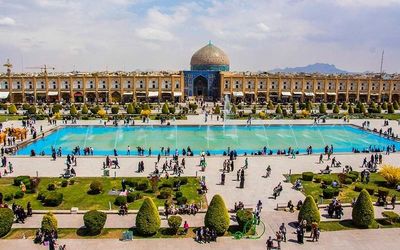Naghsh-e Jahan Sq. was laid out in the very early 17th century under the reign of the Safavid ruler, Shah Abbas the Great, to signal the importance of Isfahan as a capital of a powerful empire.
According to the Horizon 2020, the Naghsh-e Jahan Square (locally called “Meidan Emam” and literary meaning “Image of the World”) is an open-air educational hub, oriented to preserve tradition and know-how about cultural heritage conservation while promoting entrepreneurship and employment.
“The square is public plaza and a group of historic buildings, a UNESCO World Heritage site [since 1979], and it is home to various creative enterprises such as handicraft shops, restaurants, galleries, in addition to mosques and bazaars.”
The monumental square has been registered and introduced in the form of a research project as a wealth (asset) of cultural heritage in the world in order to attract more investment for its optimal use.
Director of the Office of International Scientific Cooperation of the University of Isfahan, Sayyed Komeil Tayyebi announced on Friday that Naghsh-e Jahan Square, over its unique heritage, historical, economic and urban features, has been selected and introduced as an international cultural heritage asset for international organizations in a research project conducted by the European Union, Tehran Times reported.
The square is hemmed on four sides by magnificent buildings: to the east, the Sheikh Lotfollah Mosque; to the west, the palace of Ali Qapu; to the north, the portico of Qeyssariyeh; and to the south, the eminent Imam Mosque.
According to UNESCO, the square was at the heart of the Safavid capital’s culture, economy, religion, social power, government, and politics. Its vast sandy esplanade was used for celebrations, promenades, and public executions, for playing polo and for assembling troops.
Source: ISNA

